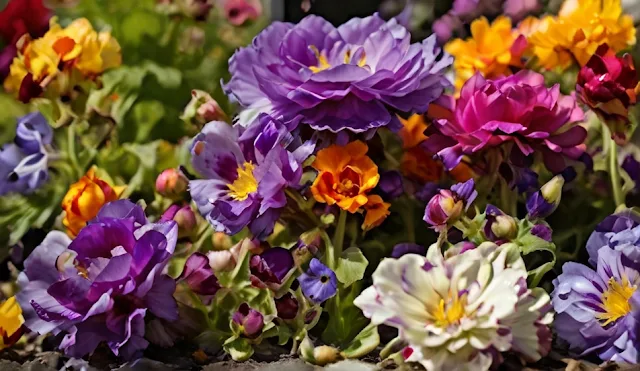The idea of incorporating edible flowers into your garden landscape not only adds a splash of color and vibrancy but also introduces a delightful fusion of beauty and taste to your outdoor space. Edible flowers offer a unique opportunity to enhance both the aesthetic appeal and culinary experience of your garden. Whether you're a seasoned gardener or just starting out, here are some simple tips for incorporating edible flowers into your landscape.
Choose the Right Flowers:
When selecting edible flowers for your
garden, it's essential to choose varieties that are safe to eat and free from
harmful chemicals. Some popular edible flowers include pansies, nasturtiums,
calendula, roses, violets, and lavender. Research the specific varieties of
edible flowers that thrive in your climate and soil conditions, and ensure they
are grown organically or sourced from reputable suppliers to guarantee their
safety for consumption.
Consider Culinary Uses:
Before planting edible flowers in your
garden, consider their culinary uses and how you plan to incorporate them into
your meals. Edible flowers can be used fresh as garnishes for salads, desserts,
and drinks, or they can be dried and used to infuse flavor into teas, syrups,
and baked goods. Experiment with different combinations of edible flowers to
create visually stunning and flavorful dishes that showcase the natural beauty
and versatility of these blooms.
Plant with Purpose:
Integrate edible flowers into your garden
landscape with purpose and intentionality. Consider planting them alongside
herbs, vegetables, or fruits to create a functional and visually appealing
edible garden. Use edible flowers to add vertical interest to your garden beds
or containers, or plant them in clusters or drifts to create eye-catching focal
points. Incorporate edible flowers into existing flower borders or create
dedicated flower beds or containers specifically for growing edible blooms.
Provide Proper Care:
Like any other plant in your garden, edible
flowers require proper care and maintenance to thrive. Ensure they receive
adequate sunlight, water, and nutrients to support healthy growth and prolific
blooming. Deadhead spent flowers regularly to encourage continuous blooming and
prevent self-seeding, which can lead to overcrowding. Monitor for pests and
diseases, and address any issues promptly using organic methods to protect both
your edible flowers and other garden plants.
Harvesting and Storage:
Harvest edible flowers at their peak
freshness and flavor for the best culinary results. Pick flowers in the morning
when they are fully hydrated and before the heat of the day causes them to
wilt. Gently rinse flowers under cold water to remove any dirt or insects, and
pat them dry with a clean towel before using them in recipes. Store freshly
harvested edible flowers in the refrigerator in a sealed container lined with
paper towels to maintain freshness for up to a week.
Safety Considerations:
While many flowers are safe to eat, it's
essential to exercise caution and avoid consuming flowers that may be toxic or
treated with pesticides. Only eat flowers that you can positively identify as
edible, and avoid flowers from florists, nurseries, or garden centers that may
have been treated with chemicals. If you have allergies or sensitivities,
consult with a healthcare professional before consuming edible flowers, and
introduce them into your diet gradually to monitor for any adverse reactions.
Explore New Possibilities:
Don't be afraid to get creative and
experiment with new ways to incorporate edible flowers into your culinary
repertoire. Use edible flowers to infuse oils, vinegars, or spirits with
delicate floral flavors, or incorporate them into homemade jams, jellies, or
preserves for a unique twist on traditional recipes. Host a garden-to-table
dinner party and impress your guests with a menu featuring fresh, seasonal
dishes adorned with edible flowers picked straight from your garden.
In conclusion, incorporating edible flowers
into your garden landscape is a delightful way to elevate both the visual
appeal and culinary experience of your outdoor space. By choosing the right
flowers, considering their culinary uses, planting with purpose, providing
proper care, harvesting and storing them correctly, prioritizing safety
considerations, and exploring new possibilities for culinary creativity, you
can create a garden that delights the senses and nourishes the body and soul.
So, roll up your sleeves, dig in the dirt, and let the beauty and flavor of
edible flowers inspire your gardening and culinary adventures.

